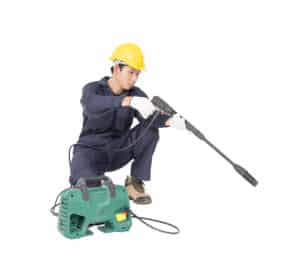How to Maintain Your Electric Pressure Washer
Key Takeaways
- Regularly changing the oil, inspecting and cleaning filters, and lubricating moving parts are crucial tasks for maintaining an electric pressure washer.
- Thoroughly clean the pressure washer after each use and inspect for any signs of damage to prevent further issues.
- Using the correct nozzle and properly attaching accessories are important considerations for efficient cleaning and preventing damage to the pressure washer.
Maintaining your electric pressure washer is essential for ensuring its longevity and optimal performance. By following a proper maintenance routine, you can extend the life of your pressure washer and avoid costly repairs or replacements. In this article, we will discuss the steps and tips for effectively maintaining your electric pressure washer.
Regular Maintenance Routine
Adhering to a regular maintenance routine is crucial for keeping your electric pressure washer in good working condition. Here are some key tasks to include in your routine:
- Changing the Oil: Regularly changing the oil in your pressure washer is important for proper lubrication of the engine. Consult your pressure washer’s user manual for specific instructions on how often you should change the oil and the recommended oil type.
- Inspecting and Cleaning Filters: Filters in your pressure washer help prevent debris from entering the system, so it’s important to inspect and clean them regularly. Remove any dirt or debris from the filters and replace them if necessary.
- Lubricating Moving Parts: Lubricating the moving parts of your pressure washer, such as the pump, engine, and fittings, can help reduce friction and extend their lifespan. Use a lubricant recommended by the manufacturer and apply it according to the instructions.
Cleaning and Inspection
Regularly cleaning and inspecting your pressure washer is essential for identifying and addressing potential problems early on. Here are some tips to follow:
- Clean After Each Use: After each use, thoroughly clean your pressure washer to remove any dirt, grime, or detergent residue. Use a mild detergent and a soft brush or cloth to clean the exterior surfaces, and ensure that the nozzles and spray gun are free from clogs.
- Inspect for Damage: Take the time to inspect your pressure washer for any signs of damage, such as leaks, cracks, or worn-out parts. Address these issues promptly to prevent further damage and ensure safe operation.
Using the Right Accessories
Using the right accessories for specific cleaning tasks can help prolong the life of your electric pressure washer. Here are some considerations:
- Choose the Correct Nozzle: Different cleaning tasks require different nozzle types. Using the correct nozzle will ensure efficient cleaning and prevent unnecessary strain on the pressure washer’s components. Refer to your pressure washer’s user manual for guidance on choosing the appropriate nozzle.
- Properly Attach Accessories: When using accessories such as extension wands or surface cleaners, ensure they are securely attached to the pressure washer to prevent any damage or accidents during operation.
Proper Storage
Properly storing your electric pressure washer when not in use is crucial for protecting it from damage and extending its lifespan. Follow these steps:
- Flush the System: After each use, flush the pressure washer with clean water to remove any remaining detergent or debris. This helps prevent clogs and corrosion.
- Disconnect Hoses and Drain Water: Disconnect all hoses and drain any water from the system to prevent freezing during colder months. Refer to your pressure washer’s user manual for specific instructions on how to drain the water properly.
- Clean and Store Accessories: Clean and store all accessories, such as the high-pressure hose, gun, and wand, in a clean and dry area. This helps prevent damage and ensures they are ready for future use.
- Choose a Suitable Storage Location: Store your pressure washer in a clean, dry area that is protected from extreme temperatures and the elements. Avoid areas prone to moisture or freezing temperatures.
By following these maintenance tips, you can help prolong the life of your electric pressure washer and ensure its reliable performance for years to come. Remember to consult your pressure washer’s user manual for specific maintenance instructions and recommendations.
Related Websites:
- Pressure Washer Wisdom – What is the Life Expectancy of a Pressure Washer?
- Which? – 5 Ways to Make Your Pressure Washer Last Longer
- Pressure Washers Direct – How to Store an Electric Pressure Washer Through Winter
- Garden Tool Expert – How Long Do Pressure Washers Last? (With Helpful Tips)
- House Digest – How to Store a Pressure Washer
FAQs:
Q: Why should I use an electric pressure washer?
Using an electric pressure washer offers several benefits, such as efficient cleaning, ease of use, and environmental friendliness. Electric pressure washers are also quieter and require less maintenance compared to gas-powered ones.
Q: How often should I clean the pressure washer after each use?
It is important to clean the pressure washer thoroughly after each use to prevent clogging and maintain optimal performance. Set aside a few minutes to rinse off any dirt or debris, and make sure to dry it properly before storage.
Q: Why is it necessary to inspect the pressure washer for damages or wear?
Regularly inspecting the pressure washer helps identify any damages or wear that may affect its performance. By detecting issues early on, you can prevent further damage and ensure a longer lifespan for your machine.
Q: How do I clean and unclog a pressure washer nozzle?
To clean a clogged nozzle, you can soak it in a nozzle cleaning solution or use a small pin to remove any debris. Make sure to follow the manufacturer’s instructions and exercise caution while cleaning to avoid damaging the nozzle.
Q: What is the importance of winterizing a pressure washer?
Winterizing your pressure washer is crucial to prevent freezing and damage to the internal components. This involves draining all water from the machine, adding antifreeze if necessary, and storing it in a protected area during colder months.






